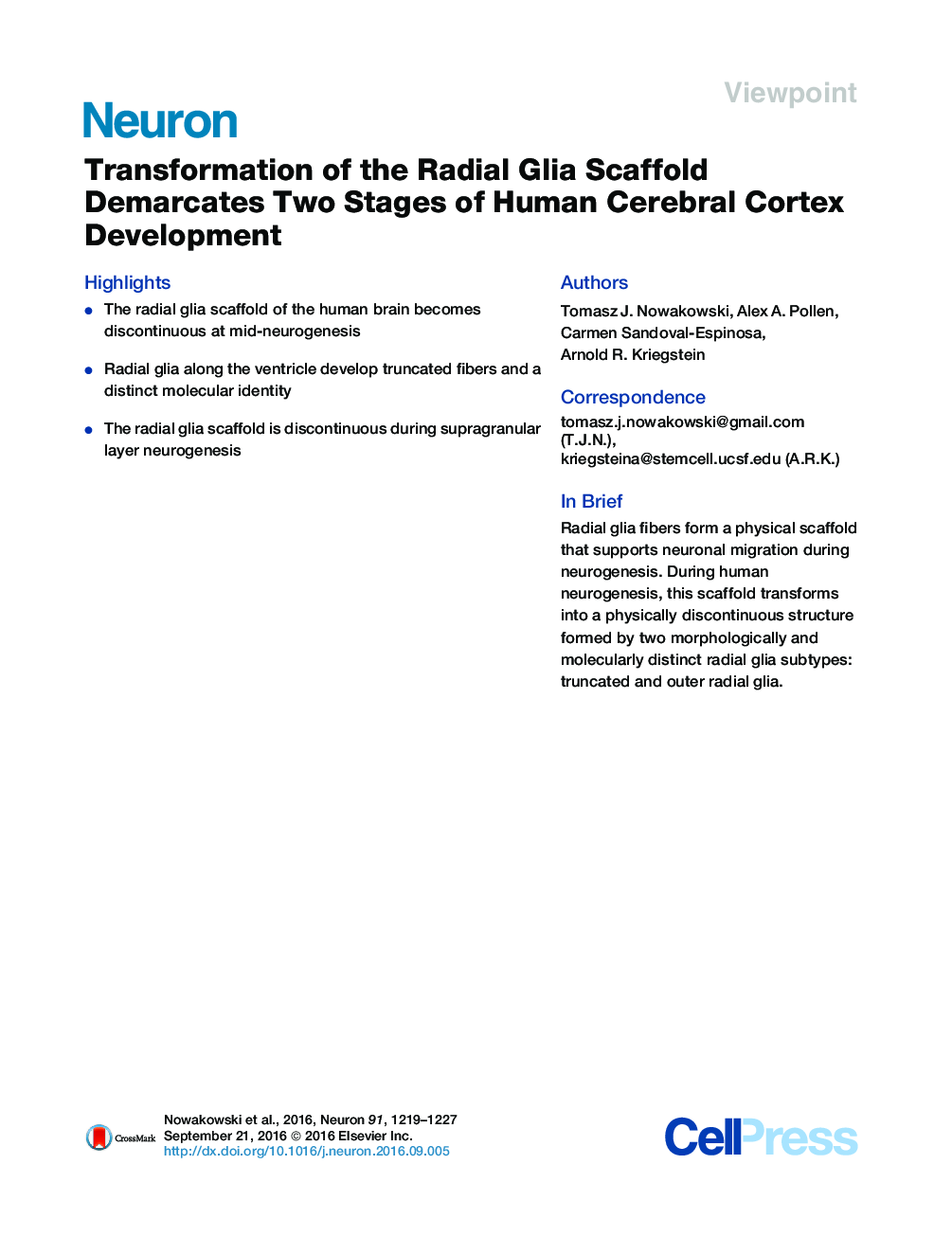| Article ID | Journal | Published Year | Pages | File Type |
|---|---|---|---|---|
| 4320630 | Neuron | 2016 | 9 Pages |
•The radial glia scaffold of the human brain becomes discontinuous at mid-neurogenesis•Radial glia along the ventricle develop truncated fibers and a distinct molecular identity•The radial glia scaffold is discontinuous during supragranular layer neurogenesis
SummaryThe classic view of cortical development, embodied in the radial unit hypothesis, highlights the ventricular radial glia (vRG) scaffold as a key architectonic feature of the developing neocortex. The scaffold includes continuous fibers spanning the thickness of the developing cortex during neurogenesis across mammals. However, we find that in humans, the scaffold transforms into a physically discontinuous structure during the transition from infragranular to supragranular neuron production. As a consequence of this transformation, supragranular layer neurons arrive at their terminal positions in the cortical plate along outer radial glia (oRG) cell fibers. In parallel, the radial glia that contact the ventricle develop distinct gene expression profile and “truncated” morphology. We propose a supragranular layer expansion hypothesis that posits a deterministic role of oRG cells in the radial and tangential expansion of supragranular layers in primates, with implications for patterns of neuronal migration, area patterning, and cortical folding.
